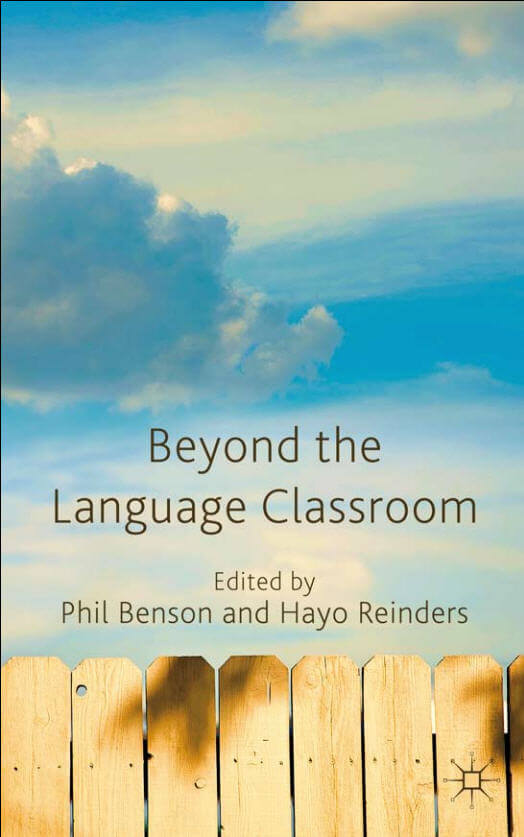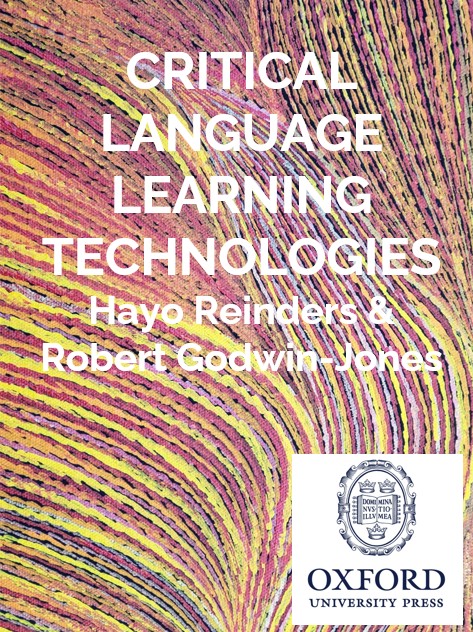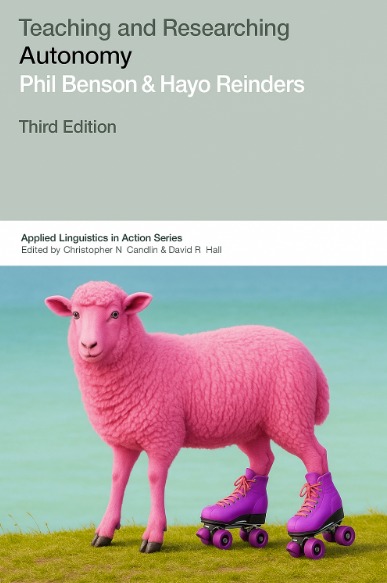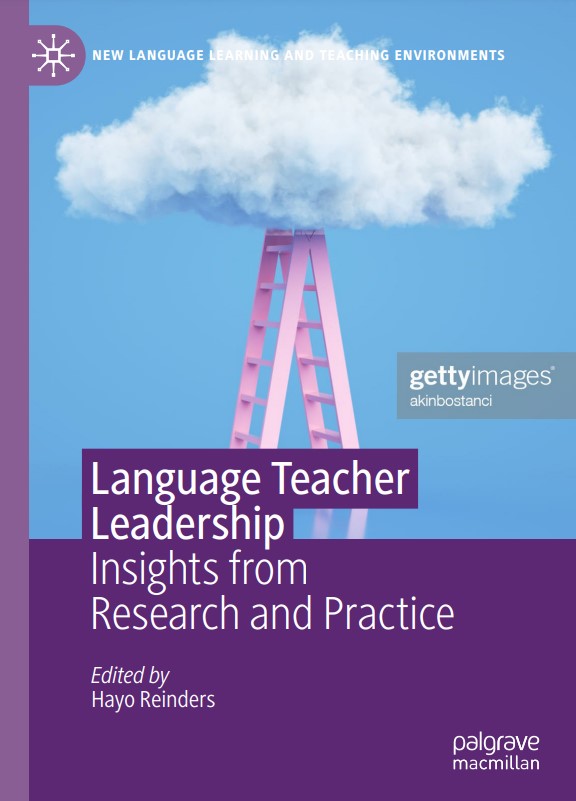Books > Beyond the Language Classroom
Benson, P. & Reinders, H. (Eds.). (2011). Beyond the language classroom. The theory and practice of informal language learning and teaching. Palgrave Macmillan.

An estimated 80% of adult learning takes place outside of formal education (Cross 1981). For language learning, it is likely that out-of-class experiences play an equally important role (cf. de Bot 2007). It is therefore surprising that the role of informal language learning has received very little attention over the years, with the vast majority of research instead focusing on classroom methods, materials and interaction.
Researchers from a range of backgrounds, however, have started to realise the important contribution of informal language learning, both in its own right, and in its relationship with classroom learning. Studies in the areas of learner autonomy, learning strategies, study abroad, language support, learners’ voices, computer-mediated communication, mobile-assisted language learning, and many others, all add to our understanding of the complex and intersecting ways in which learners construct their own language learning experiences, drawing from a wide range of resources, including materials, teachers, self-study, technology, other learners, and native speakers.
Because of the predominance of informal language learning, it is important that the existing body of research is solidified and that the various disciplines that have looked at this area are brought together to present the current state of knowledge in one, accessible volume. For this reason, the researchers below have been invited from different backgrounds to contribute individual chapters that together cover all the relevant areas.
Table of contents
Introduction
Phil Benson and Hayo Reinders
1. Language learning and teaching beyond the classroom: An introduction to the field
Phil Benson
2. Family, friends and learning beyond the classroom: Social networks and social capital in language learning
David Palfreyman
3. Places for learning: Technology-mediated language learning practices beyond the classroom
Leena Kuure
4. From milk cartons to English roommates: Context and agency in L2 learning beyond the classroom
Paula Kalaja, Riikka Alanen, Åsa Palviainen, and Hannele Dufva.
5. Affordances for language learning beyond the classroom
Vera Menezes
6. Becoming multilingual: An ethnographic approach to SLA beyond the classroom
David Divita
7. Talk about language use: I know a little about your language
Erica Zimmerman
8. A possible path to progress: Out-of-school English language learners in Sweden
Pia Sundqvist
9. Teenagers learning languages out of school: What, why and how do they learn? How can school help them?
Sophie Bailly
10. Older language learners, social learning spaces, and community
Garold Murray
11. Tandem learning in virtual spaces: Supporting non-formal and informal learning in adults
Ursula Stickler and Martina Emke
12. Home tutor cognitions and the nature of tutor-learner relationships
Gary Barkhuizen
13. Materials development for language learning beyond the classroom
Hayo Reinders
Introduction to the book
Introduction: Phil Benson and Hayo Reinders
This volume brings together 13 chapters that have been especially written for this collection in response to an international call for contributions to a book devoted to research on language learning and teaching beyond the classroom. In one sense, the common factor among the papers lies in what they are not; there are no studies of classroom language learning or teaching in this volume. This is a significant point, because so many studies are based on research carried out in classrooms or with classroom learners and quite possibly informed by hidden assumptions related to the classroom setting. Studies of language learning and teaching in settings beyond the classroom are valuable, therefore, because they provide alternative perspectives on the meaning of, and social and cognitive processes involved in, language learning and teaching.
At the same time, we are aware of the risks involved in describing this volume in terms of what it is not – risks that are highlighted by the difficulty of avoiding terms such as informal, out-of-class, non-instructed, and so on, which appear to take this way of describing our object of inquiry for granted. We are also aware of the risk of treating the world beyond the classroom as an alternative to the classroom, as if classrooms were the natural place for language learning to take place and the world beyond the classroom a strange and hostile territory in which languages are learned with difficulty, if at all. With the rise of mass education over the past 50 years or so, there has certainly been a tendency for language learning to migrate into educational institutions, to the point where research often views language learning as an ‘effect’ produced by the ‘cause’ of classroom language teaching, which is likely to be stronger or weaker according to the teaching method or style and a variety of social and individual difference variables among the learners. Yet is also common knowledge among teachers that the progress made by students who learn languages only in the classroom tends to be limited, especially in their ability to use the language for spoken or written communication. Well-rounded communicative proficiency, it seems, depends to a large extent on the learner’s efforts to use and learn the language beyond the walls of the classroom. For this reason alone, settings for language learning beyond the classroom deserves much more attention in research than they have received hitherto.
The balance of published research suggests that language learners spend more time learning languages in classrooms than outside them. Whether this is an accurate reflection of current patterns of language learning worldwide is open to question. We suspect that it is not and that vast swathes of the territory for language learning beyond the classroom remain undiscovered by research. One of the interesting features to emerge from this volume, therefore, is the range of settings investigated, several of which, such as those that deal with language learning in the learner’s homes, have not been the subject of research to date. A second interesting feature to emerge has been the significance of teaching in settings beyond the classroom. The dichotomy between classroom and out-of-class learning is often paired with a dichotomy between instructed and non-instructed, or ‘naturalistic’ learning, which can also lead to an assumption that the classroom is a place for teaching and learning, while the world beyond the classroom is only a place for learning. The contributions to this volume suggest that this is a false assumption, and that much of the interest in language learning beyond the classroom lies in the distinctive modes of pedagogy that are found in different settings. These issues are addressed at a theoretical level in Benson’s opening chapter (Chapter 1), which offers an analytical framework for investigating language learning beyond the classroom, involving dimensions of location, formality, pedagogy and locus of control, and a distinction between settings and the modes of practice in learning and teaching that they support.
The chapters that follow report data-based studies of learning and teaching in a variety of settings, using a variety of theoretical perspectives and research methodologies. Chapters 2 to 5 each explore patterns of language learning beyond the classroom from four different, but related, theoretical perspectives. In an interview study of female English learners and their families in the United Arab Emirates, Palfreyman (Chapter 2) uses Social Networking theory to focus on the role of relationships with family and friends, arguing that interaction with ‘significant others’ is a crucial element in language learning beyond the classroom. Palfreyman’s study is particularly valuable in showing how access to target language resources,such as reading materials or native speakers, is likely to be mediated through learners’ family and friendship networks. Kuure (Chapter 3) uses Mediated Discourse Analysis to analyze case study data of a Finnish English learner’s out-of-school, technology-mediated language learning. Here the setting is both the home and the virtual gaming environments in which the learner spends much of his spare time. Kuure shows how online games and the activities around them provide important affordances for language learning, although language learning is not necessarily the objective, as a means of nurturing social relationships through collaborative problem-solving and networking among online peers. Kalaja an her research team (Chapter 4) report a study based on Vygotskyan theory and using qualitative analysis of open-ended questionnaire responses, which compares the different ways in which young Finns learn English and Swedish in and out of school. They find that while their school-based experiences are similar, their out-of-school experiences are very different, with students being much more active in exercising their agency in learning English – an illustration of how different modes of practice can develop in very similar settings, in this case for the learning of different languages. Menezes (Chapter 5) uses narrative data from a collection of written language learning histories, to explore the concept of ‘affordances’ in Ecological theory as a metaphor for understanding how Brazilian learners of English seek out opportunities for learning beyond the classroom. Arguing that affordances do not simply exist in the environment, but are constructed within the learners relationship with it, she examines how learners exercise their agency to find their own particular ‘niches’ and reconstruct their learning environments.
Chapters 6 to 8 look more closely at what is actually learned in language learning beyond the classroom. In an ethnographic study of two Spanish women who arrived in France refugees from the Spanish Civil War and learned French largely ‘naturalistically’, Divita (Chapter 6) makes the important point that, in non-institutional settings, ‘language acquisition’ might be better conceived as a process of becoming multilingual that unfolds in idiosyncratic ways and is shaped by experiences of the sociohistorical conditions in which it occurs. Adopting an approach that pays close attention to language data, Divita seeks evidence for this process in the two women’s use of language and, in particular, their use of code switching. Zimmerman’s (Chapter 7) study is also based on close analysis of language data, using Conversation Analysis techniques, consisting of interactions between Korean learners of Japanese and their homestay hosts. Zimmerman provides important evidence of ‘teaching and learning’ episodes in these interactions, which illustrate the sense in which pedagogy may always be present in language learning beyond the classroom. Sundqvist’s (Chapter 8) quantitative study directly tackles the question of whether Swedish students who engage in English learning language learning beyond the classroom actually learn more than those whose learning is limited to school. The results are interesting, if not entirely, predictable: she finds a strong correlation between time spent on out-of-class learning and oral proficiency/vocabulary size, as well as correlation between these factors and gender patterns in the types of activities, which meant that learning beyond the classroom had a greater impact on boys than girls.
Chapters 9-12 examine issues arising from institutional initiatives to provide opportunities for language learning beyond the classroom: a self-directed language learning programme for young people in France, a self-access English project for elderly people in Japan, a tandem learning project involving participants in Germany, Italy, Poland and the United Kingdom, and home tutoring in English for migrants to New Zealand. Bailly’s (Chapter 9) project provided learners in a vocational high school in France with the opportunity to learn a language of their choice outside school, supported by advisory sessions, web-based learning materials and opportunities to talk with native speakers of the target languages. Evaluation of the project identified continuities between out-of-school language learning and the learners’ school, personal and social lives and three important conditions for success in self-directed language learning: motivation, learning resources and learning skills. Murray’s project (Chapter 10) was also designed to provide language learning opportunities to people who would not otherwise receive them, in this case elderly Japanese attending a university self-access language learning centre designed for use by the general public. His evaluation suggests that older language learners can especially benefit from the creation of social learning spaces offering possibilities for participation in a community of learners and pedagogical support. Stickler & Emke (Chapter 11) report on a tandem learning project for adult learners involving partners in four European countries. Using language data from the project, they investigate how formal, non-formal and informal learning processes support the acquisition of key competences, arguing that non-formal learning plays an important role in adult language learning. Lastly, Barkhuizen’s (Chapter 12) narrative interview study with home tutors of New Zealand migrants deals directly with language teaching beyond the classroom and in the homes of the learners. Focusing on the interpersonal, emotional dimensions of teaching, which come to the fore in one-to-one teaching in the learner’s home, he argues that the nature of the tutor-learner relationship is a major factor in the decision-making processes and practices of tutors and ultimately in the success of their learners.
A number of chapters highlight the role of teaching and, indeed, teachers in language learning beyond the classroom, which suggests that the distinction between classroom and out-of-class learning is a fuzzy one at best. In particular, language learning beyond the classroom is often initiated by teachers who work in educational institutions, and may even take place in these institutions or in off-campus locations. The important role that teachers often play is highlighted in Reinders’ concluding chapter (Chapter 13) which offers principles and practical advice on the design of language learning materials for use in a range of out-of-class settings.
Language learning and teaching beyond the classroom is not a new area of research, in the sense that studies have appeared in the literature from time to time over the years. This volume is timely, however, because the number of studies is increasing and, indeed, it is unlikely that our call for contributions would have received such a positive response 20 or even 10 years ago. In our view, this opens up the possibility of exploring language learning beyond the classroom as an area of inquiry with its own theoretical assumptions and issues of particular concern. Increased interest in out-of-class learning is prompted, in part, by a shift in the basic assumptions of second language acquisition research among many researchers, who no longer see acquisition in purely cognitive terms, but in terms of participation in communities and contexts of various kinds. This view has led to interest in qualitative studies of learners’ lives and often to the use of ethnographic or retrospective self-report data to investigate learning in out-of-class settings. The studies in this volume illustrate this trend, but are also diverse in their use of research methods, especially in the use of quantitative methods and close analysis of language data.
The key issues to emerge from the volume, which readers may wish to keep in mind as they read, include (1) how we might develop a more comprehensive view of the shared and distinctive features of diverse settings for language learning beyond the classroom, (2) the distinctive characteristics of learning processes and what learners actually learn in these settings, and (3) the roles and distinctive forms of teaching and pedagogy. These issues are likely to be most of interest to the growing number of educators who work with learners in non-conventional settings for language teaching and learning, but the possibility of developing a more general understanding of relationships between settings (including classroom settings), learning and pedagogy means that they are equally relevant to teachers who do most of their work in classrooms.


